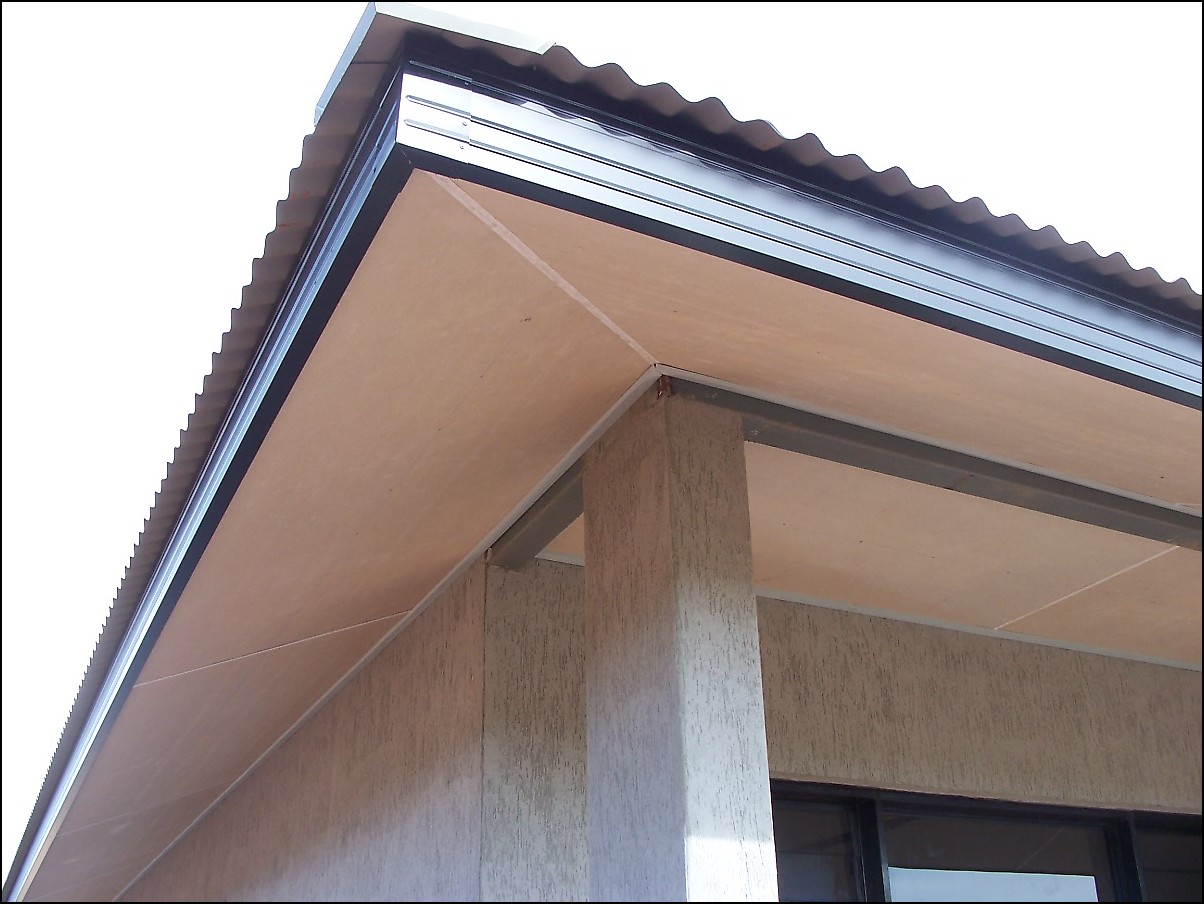
17 Dec What types of fascias and soffits are available for my roof
Fascias and soffits are not a fashion accessory. They serve a very important purpose on a roofing system: fascias run along the lower edge of the roof, fixed directly to the lower end of the roof trusses to support the lower roof tiles. They also carry the guttering so must be robust. Soffits are tucked under the fascia board to seal up the lower roof, and in new builds they usually have slats to assist attic ventilation.
So, to recap:
- Fascias run along the lower edge of the roof and support the lower tiles.
- Soffits run underneath the fascia, assist ventilation and are visible at ground level.
When it comes to the types of fascias and soffits available for your roof, this really is a question of material. There are three common materials: wood, UPVC and aluminium. The best material for your roof depends on the period of your home, what other people have in the area and whether or not your home is listed.
Wood fascias and soffits
Wood fascias and soffits are the traditional choice and often the only option on listed buildings. These are made from pressure-treated softwood, which has a shelf life of around 15 to 20 years. The benefit of wood is it paints up very well and is durable. It’s also biodegradable and fully recyclable.
To manufacture up wooden fascias and soffits a woodworker crafts each timber sheet using machinery. This is then build up on site.
UPVC fascias and soffits
UPVC fascias and soffits are the modern choice and especially on new builds. UPVC has a shelf life of more than 20 years although it can discolour over time. UPVC is durable, hardy and can be spray painted any colour. UPVC is not widely recycled and it is doesn’t fit in rural settings, so it’s best reserved for newer homes.
To manufacture up UPVC fascias and soffits, machinery is used to cut sheets of UPVC to size, sometimes abroad, with the components built up on site.
Aluminium fascias and soffits
Aluminium fascias and soffits are the most expensive choice, but they repay you in the long-term with a shelf life of more than 30 years. Aluminium doesn’t oxidise, but it comes powder-coated anyway for durability. Aluminium fascias and soffits are a popular choice on industrial conversions and modern homes.
To manufacture up aluminium fascias and soffits, sheet aluminium is machined to size and can either be welded onsite or bolted together.
Which is best?
The most common material we work with for fascias and soffits is UPVC, followed by wood and then aluminium.
UPVC is the cheapest option. It is mass-produced and sometimes parts can be sourced in a standard size. Wood is in-between because each piece is cut to size and working with wood is more difficult than UPVC. Aluminium is the most expensive option because the material is more difficult to work with and transport still.
What do I need?
When choosing the right material for fascias and soffits, we recommend you see what everyone else is using in your area. It is courteous to keep a consistent theme, and let’s be honest, you don’t want bright white UPVC soffits when everyone else has black wood ones that blend in. You’ll stick out like a sore thumb.
It is also a good idea to check if you are in a conservation area, because some authorities dislike the use of UPVC. Aluminium is usually a good half between because it blends in and is fully recyclable with no detriment to the environment. Most homeowners are now choosing to have soffits with ventilation to improve roof performance.
Lastly, it goes without saying your fascias and soffits should be the same material. You can, however, replace one damaged board without replacing the lot. This is common practice on wooden systems which are susceptible to rot over time.
Speak to an expert
Lastly, it is always worth consulting a roofer to determine the type of fascias and soffits you need from a structural point of view. If you’re in the Leeds area, we’d be happy to help. Call us on 0113 293 4038 for a free, no obligation chat. Thank you.

Sorry, the comment form is closed at this time.